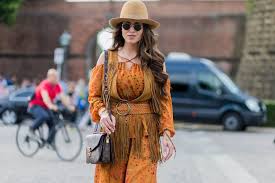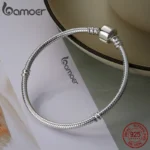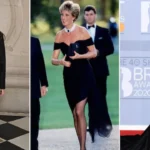Decoding the Etiquette: A Guide to Funeral Dress Code
When attending a funeral, it is essential to show respect and honor the deceased by dressing appropriately. However, understanding the funeral dress code can sometimes be confusing and overwhelming. That’s why we are here to help you decode the etiquette and provide you with a comprehensive guide on what to wear.
In this article, we will take you through various funeral dress codes and the dos and don’ts associated with each. Whether it’s a traditional, religious, or contemporary funeral, we will provide you with insights on appropriate attire for different occasions.
From understanding the significance of wearing dark colors to choosing the right accessories, our guide will equip you with the knowledge you need to ensure that your attire matches the solemnity of the occasion.
Join us as we navigate through the intricacies of funeral dress codes, providing you with valuable insights on appropriate attire and helping you pay your respects in a dignified manner.
Understanding the Importance of Funeral Dress Code

Funerals are somber occasions where people gather to mourn the loss of a loved one and celebrate their life. As such, dressing appropriately is a crucial way to show respect for the deceased and their grieving family. The funeral dress code varies depending on cultural, religious, and personal preferences, so it’s important to be aware of the specific guidelines for each occasion.
The choice of attire reflects the seriousness and solemnity of the event. It is a way to honor the deceased and pay your respects to their memory. By dressing appropriately, you demonstrate your empathy and support for the bereaved family during this difficult time.
Understanding the significance of funeral dress code goes beyond just adhering to societal norms; it is about being mindful of the emotions and sensitivities surrounding loss and grief. By dressing appropriately, you contribute to creating an atmosphere of respect and compassion.
Traditional Funeral Attire for Men
Traditionally, men are expected to wear dark, conservative attire to funerals. A black suit or a dark-colored sports jacket paired with dress pants is considered appropriate. A white or light-colored dress shirt, subdued tie, and black dress shoes complete the ensemble. Avoid bright or flashy accessories and opt for minimalistic choices that don’t draw attention.
If you don’t have a black suit, a dark gray or navy suit is an acceptable alternative. However, avoid wearing suits in vibrant colors or patterns as they may be seen as disrespectful or inappropriate for the occasion. Remember, the focus should be on paying respects rather than making a fashion statement.
It’s also important to ensure that your attire is well-fitted and clean. Wrinkled or stained clothing can be perceived as careless and disrespectful. Take the time to iron your clothes and polish your shoes before attending the funeral. This attention to detail shows your commitment to honoring the deceased and their family.
Traditional Funeral Attire for Women
For women, traditional funeral attire typically consists of a modest and conservative outfit. A knee-length or longer dress or skirt paired with a blouse or sweater is a suitable choice. Opt for dark colors like black, navy, or gray, as they convey a sense of mourning and respect.
Avoid wearing clothes with bold patterns, bright colors, or revealing cuts. The focus should be on understated elegance rather than drawing attention to oneself. Opt for simple and tasteful jewelry, such as pearl earrings or a delicate necklace.
If you prefer to wear pants, choose a tailored pair of dress pants or a pantsuit in a dark color. Pair it with a blouse or a tailored blazer for a polished look. Remember to avoid casual or overly trendy clothing, as they may be considered inappropriate for a funeral setting.
Modern Interpretations of Funeral Dress Code
While traditional funeral attire tends to be conservative and somber, modern interpretations of funeral dress code allow for more flexibility. Some families may specifically request that attendees wear bright colors or even casual attire to celebrate the life and personality of the deceased.
In such cases, it is important to respect the wishes of the bereaved family and adhere to their specific instructions. If the funeral has a specified dress code, make sure to follow it to the best of your ability.
However, if there are no specific instructions, it is still advisable to err on the side of caution and dress more conservatively. Opt for darker colors and modest attire, as this is generally seen as more respectful and appropriate for a funeral setting.
Factors to Consider When Choosing Funeral Attire
When selecting your funeral attire, it’s essential to consider several factors to ensure appropriateness and respect. Here are some key factors to keep in mind:
- Relationship with the deceased: Your relationship with the deceased and their family plays a role in determining the level of formality for your attire. If you were close to the deceased or their immediate family, it’s advisable to dress more formally.
- Cultural and religious considerations: Different cultures and religions have specific traditions and customs when it comes to funeral attire. It’s important to be aware of these customs and dress accordingly to show respect for the deceased and their culture or religion.
- Weather and location: The weather and location of the funeral may impact your choice of attire. If the funeral is outdoors or during the summer, lightweight and breathable fabrics are more suitable. Conversely, if the funeral is indoors or during the winter, warmer clothing may be necessary.
- Personal comfort: While it’s important to adhere to the funeral dress code, it’s also essential to feel comfortable in what you are wearing. Choose clothing that fits well and allows you to move freely. Comfortable shoes are also a must, as funerals often involve standing for extended periods.
By considering these factors, you can ensure that your attire is both respectful and appropriate for the occasion.
Common Etiquette Mistakes to Avoid
While dressing appropriately is crucial, there are also some common etiquette mistakes that you should avoid when attending a funeral. Here are a few key points to keep in mind:
- Avoid overly casual attire: Even if the funeral has a more relaxed dress code, it’s important not to dress too casually. Torn jeans, t-shirts with graphics, or athletic wear are generally considered inappropriate for a funeral setting.
- Don’t wear bright or flashy colors: Unless specifically requested, it’s best to avoid wearing bright or flashy colors that may draw attention. Stick to more subdued and somber tones to convey respect and mourning.
- Minimize accessories: While tasteful and minimalistic jewelry can enhance your outfit, it’s important not to overdo it. Avoid wearing excessive accessories or anything that may make noise and distract others during the service.
- Be mindful of scents: Strong perfumes or colognes can be overwhelming and may cause discomfort to others in close proximity. Opt for a subtle scent or consider going fragrance-free to avoid any potential issues.
- Turn off electronic devices: It’s crucial to silence your phone or any other electronic devices before entering the funeral venue. The focus should be on paying respects, and having a ringing phone can be disruptive and disrespectful.
By avoiding these common etiquette mistakes, you can ensure that your presence at the funeral is respectful and supportive to the bereaved family.
Dress Code Variations for Different Types of Funerals
Funerals can vary in terms of their formality and dress code depending on cultural, religious, or personal preferences. Here are some common variations you may encounter:
- Traditional religious funerals: Religious funerals often have specific dress codes that adhere to the customs and traditions of the respective faith. For example, in some Christian funerals, it’s customary to wear all-black attire, while in Jewish funerals, men may be required to wear a yarmulke and women to cover their heads. It’s important to familiarize yourself with the specific customs of the religion to dress appropriately.
- Casual or contemporary funerals: Some families may opt for a more relaxed and casual dress code to celebrate the life of the deceased. In such cases, bright colors, casual attire, or even themed clothing may be acceptable. However, it’s still important to dress respectfully and avoid anything inappropriate or offensive.
- Military or formal funerals: Military funerals or funerals with a formal dress code may require specific attire, such as a military uniform or black tie outfit. It’s important to follow any instructions provided by the family or organizers to ensure that your attire matches the formality of the occasion.
- Celebration of life ceremonies: Celebration of life ceremonies are often focused on celebrating the person’s life rather than mourning their loss. In these cases, the dress code is usually less formal, and attendees may be encouraged to wear brighter colors or even casual attire. However, it’s still important to be respectful and avoid anything that may be seen as disrespectful or inappropriate.
By understanding the dress code variations for different types of funerals, you can ensure that your attire aligns with the specific requirements of each occasion.
Dress Code Guidelines for Memorial Services and Wakes
Memorial services and wakes are often held in a more informal setting, allowing for greater flexibility in terms of dress code. While it’s important to still dress respectfully, the guidelines may be slightly more relaxed compared to traditional funerals.
For memorial services, opt for business casual attire. Men can wear dress pants or khakis paired with a collared shirt and a blazer or sports jacket. Women can wear a dress, skirt, or dress pants with a blouse or a sweater. It’s still advisable to avoid overly casual or revealing clothing, as these events are still meant to honor the deceased.
Wakes, on the other hand, are often held at funeral homes or private residences. The dress code may be more relaxed, allowing for casual attire. However, it’s essential to be respectful and avoid anything that may be seen as inappropriate. Stick to clean and presentable clothing, and avoid anything too casual or revealing.
Adapting Funeral Dress Code for Different Cultures and Religions
Funeral customs and dress codes can vary significantly across different cultures and religions. It’s important to be aware of these variations and adapt your attire accordingly to show respect for the deceased and their customs.
For example, in Chinese funerals, white is the color of mourning, while in Hindu funerals, white is considered inappropriate. In some African and Caribbean cultures, vibrant colors and traditional clothing may be encouraged to celebrate the life of the deceased. Familiarize yourself with the specific customs of the culture or religion to ensure that your attire is appropriate and respectful.
If you’re unsure about the dress code for a specific cultural or religious funeral, don’t hesitate to reach out to the family or a trusted friend who can provide guidance. Showing your willingness to learn and adapt demonstrates your respect and consideration for the bereaved family.
Conclusion: Honoring the Deceased with Appropriate Attire
Attending a funeral is a way to pay your respects and support the grieving family. Dressing appropriately is a vital part of this process, as it conveys your respect and empathy for the deceased and their loved ones. By understanding the funeral dress code and adhering to the specific guidelines for each occasion, you can ensure that your attire matches the solemnity and significance of the event.
Whether it’s a traditional, religious, or contemporary funeral, the key is to dress modestly, conservatively, and in dark colors. It’s important to consider the specific cultural, religious, and personal preferences of the bereaved family and adapt your attire accordingly.
By following the guidelines outlined in this comprehensive guide, you can navigate the intricacies of funeral dress codes with confidence and ensure that you pay your respects in a dignified manner. Remember, dressing appropriately is a tangible way to show your support and compassion during this difficult time.














